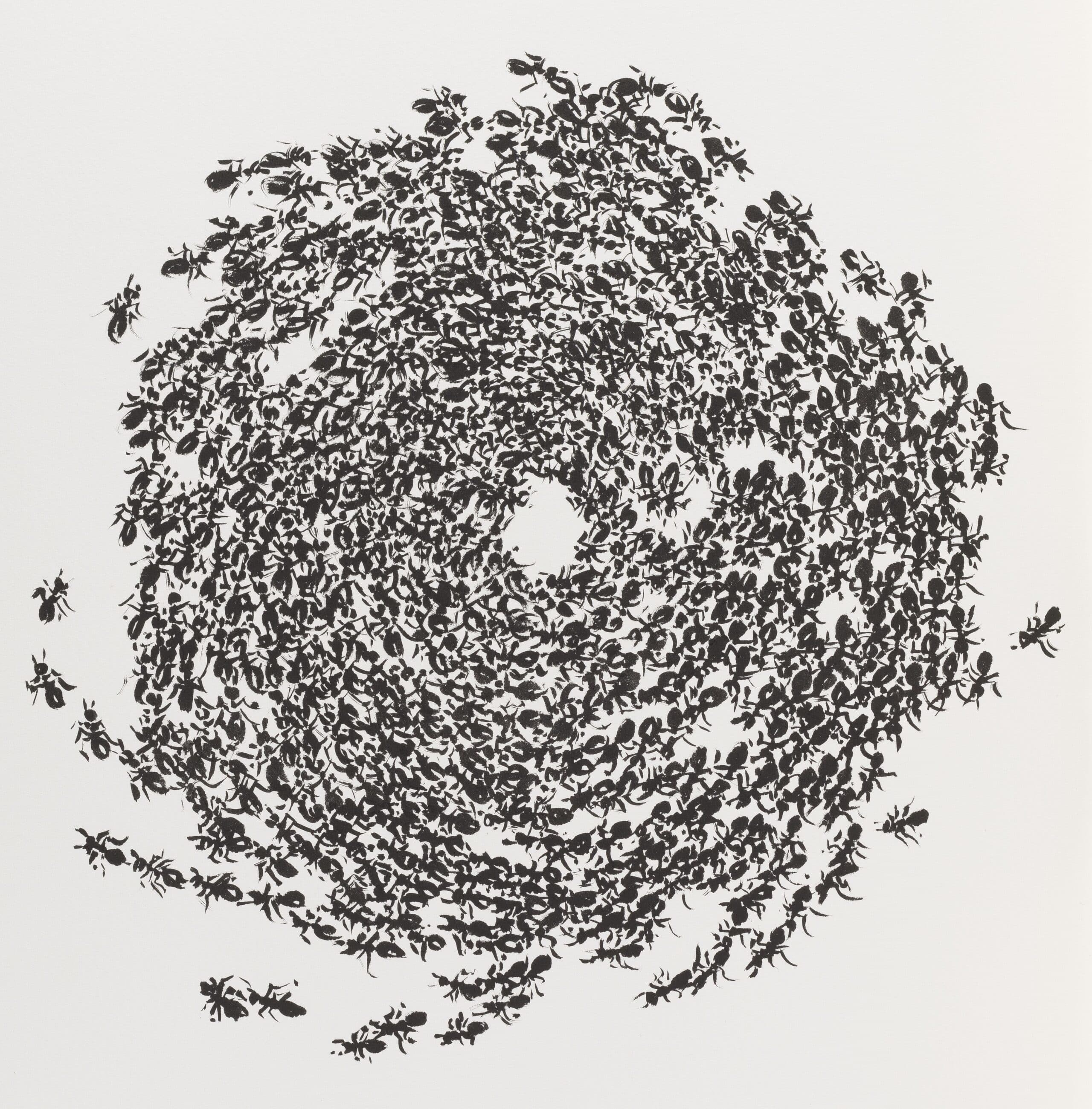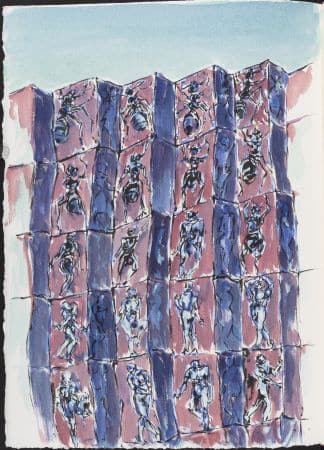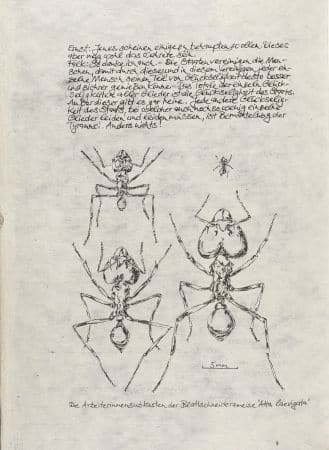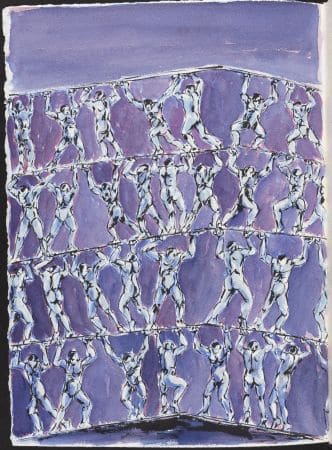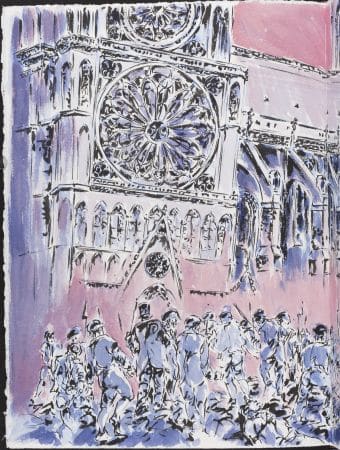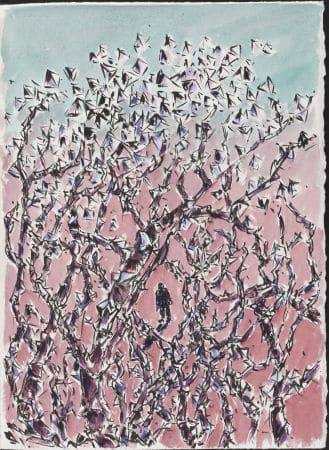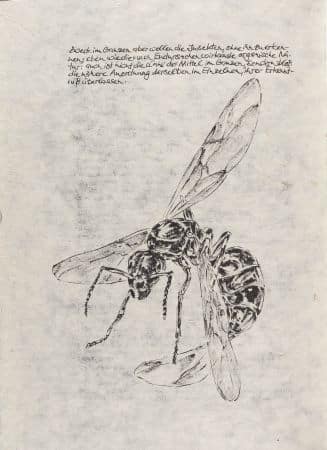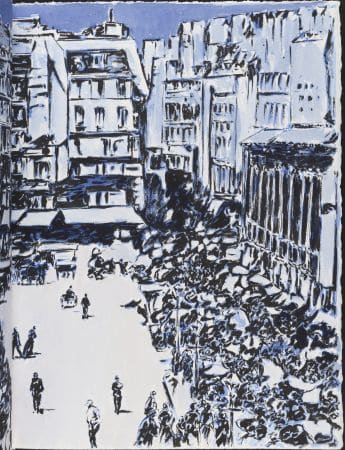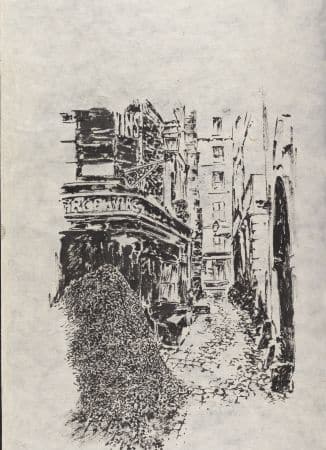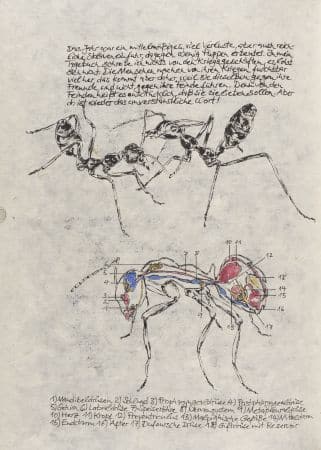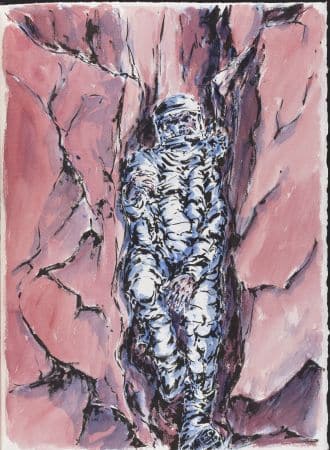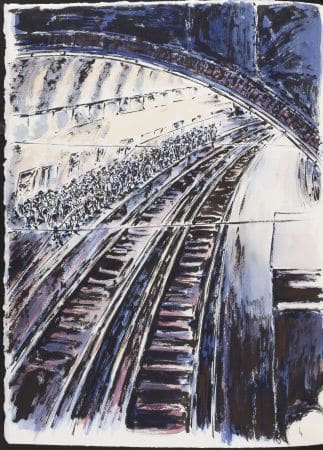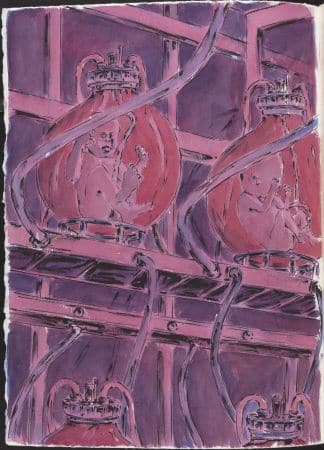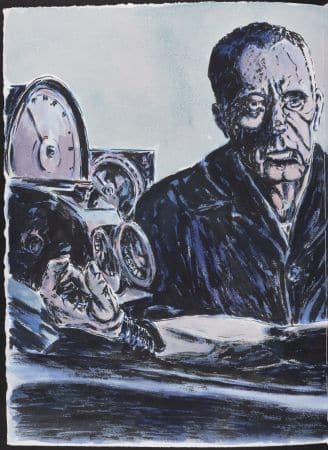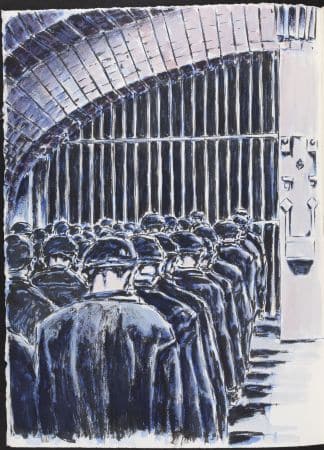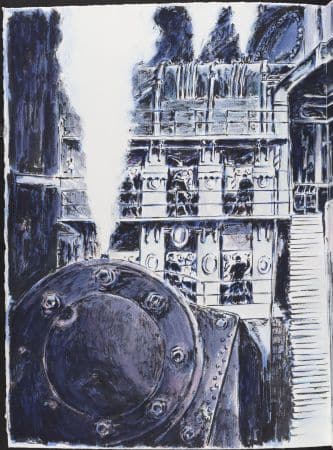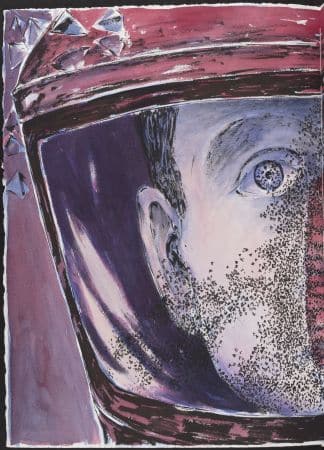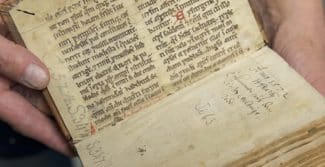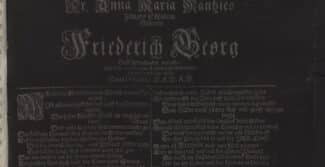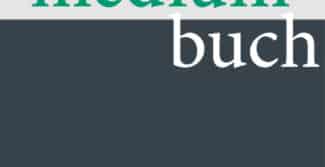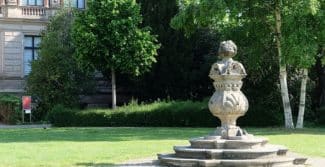14 April 2021
The Herzog August Bibliothek made a very exciting acquisition at the beginning of 2021. The artist’s book Wege der Ameise (2020) by Kai Pfankuch is remarkable in several respects. First of all, it is a one-off. It took the Hofheim-based artist almost two years to complete the 120 pages of handwritten texts on semi-transparent Chinese paper and the 52 original drawings in Japanese calligraphy ink and watercolours. Secondly, in terms of content it is much more than simply a creative way of combining art and science or text and image.
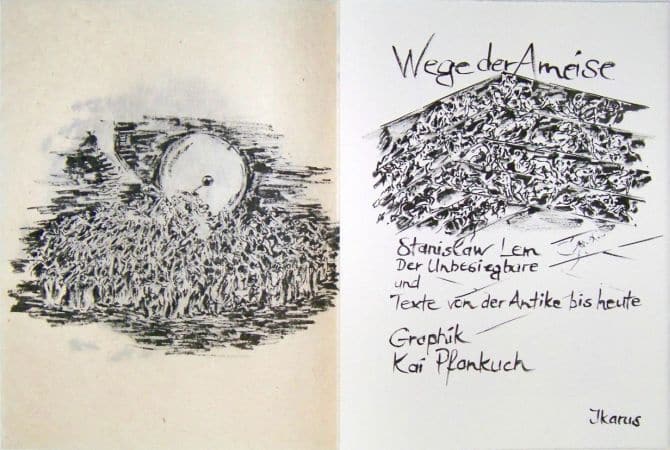
Wege der Ameise is a reflective analysis of society and the various forms of social order, stretching all the way from antiquity to a vision of the future. Inspired by Niels Werber’s book Ameisengesellschaften: Eine Faszinationsgeschichte (Ant Colonies: The History of a Fascination, 2013), which is concerned with how ants are used as metaphors for the self-description of society in literature, Kai Pfankuch puts together texts by Pliny the Elder, Ovid, Apuleius, Brant, Perrière, Lessing, Lichtenberg, Schopenhauer, Baudelaire, Laßwitz, Wells, Simmel, Jünger, Huxley, Vian and Hölldobler, copying them out word by word with a drawing pen. What all the texts have in common is the topos of the ant and the question of the extent to which ant colonies can provide a model for human social organisation.
Each section of the book is a separate thematic block based on a central notion or notions: myth, dream (antiquity); morality (late Middle Ages, early modern period); reason, state, revolt (Age of Enlightenment); city crowd, bustle (urban development in the mid-19th century); satire, horror stories (late 19th century); selfhood and crowds, the abstract nature of life (urban development in the late 19th and early 20th centuries); totalitarianism, uniformity, war, human-machine (dystopia), organisation (swarm). All the way through the book, the ‘ant texts’ are interspersed with two chapters from the science-fiction short story The Invincible by Stanisław Lem (1964), which is about a swarm of self-propelled electronic particles as the end point in a ‘dead’ evolution of machines. The literary texts are linked by illustrations of each theme in the form of ink-and-watercolour drawings. Dominated by a palette of threatening reds and cool blues, these visual interpretations use both human figures and architectural renderings to make an associative foray through various aspects of the historical social order. The utopian illustrations of a modern capitalist mass society evoke mechanisation, automation and alienation. Yet this impression is always tempered by the subtle, personal signature of the artist.
Alongside the chronological aspect, moving backwards and forwards between antiquity and the future, Pfankuch also varies the dimensions, using black-and-white drawings to enlarge the ant as the central object and to conduct a scientific analysis of the insect.
Captured in a level of detail that reflects their complexity, these busy creatures, who seem to be permanently on the move, traverse the texts in a quiet order. In terms of rhythm, conformity and structure, an ant colony shows not only what lies at the core of a social system but also how it can change. In Wege der Ameise Pfankuch succeeds in linking literary content and artistic ideas with philosophical and scientific discoveries. A social history in an artist’s book.
About the artist:
Kai Pfankuch is a painter, a draughtsman and a book illustrator. His works are executed exclusively on paper and range from large-format, in some cases multi-part watercolours to watercolour drawings done in pen and ink, lithographs, silkscreen prints and etchings. He has been making artists’ books since 1994, producing them through his own publishing house Ikarus-Presse. The collection of the Herzog August Bibliothek includes ten of Pfankuch’s works. He researched the literary texts used in Wege der Ameise during a research fellowship at the Herzog August Bibliothek.
